-
That iconic black and tan coat is more than just a pretty face! It's a double coat designed to protect Rottweilers from the elements.
-
Be prepared for shedding! Rottweilers shed moderately year-round, with heavier shedding happening twice a year.
-
Regular brushing is key to managing shedding and keeping that coat healthy and shiny.
-
Bathing should be done sparingly to avoid drying out their skin.
-
A healthy diet contributes to a healthy coat, so make sure your Rottie is getting all the nutrients they need.
In this guide, we’re gonna get up close and personal with the Rottweiler coat. We’ll break down the classic colors and markings, explore that double-coat magic, and give you the lowdown on keeping your Rottie looking (and feeling) their best.
Color and Markings: The Iconic Rottweiler Style
Let’s talk fashion! Okay, maybe not fashion fashion, but Rottweilers definitely rock a signature look. And that sleek, glossy coat is a big part of it.
The Classic Black and Tan:
If you picture a Rottweiler in your mind, you’re probably picturing that classic black and tan combo. It’s like their official uniform! The base color is always black, rich and deep like a moonless night. Then you’ve got those distinctive tan markings – think of them as stylish accents.
Where’s the Tan?
Those tan markings usually show up in specific spots:
- Cheeks: Like little patches of sunshine on their face.
- Chest: A splash of tan right on their chest, like a superhero’s emblem.
- Legs: Tan points on their feet that almost look like they’re wearing socks.
- Eyebrows: Just a touch of tan above the eyes, giving them that alert, intelligent expression.
- Tail: Sometimes a bit of tan under the tail too.
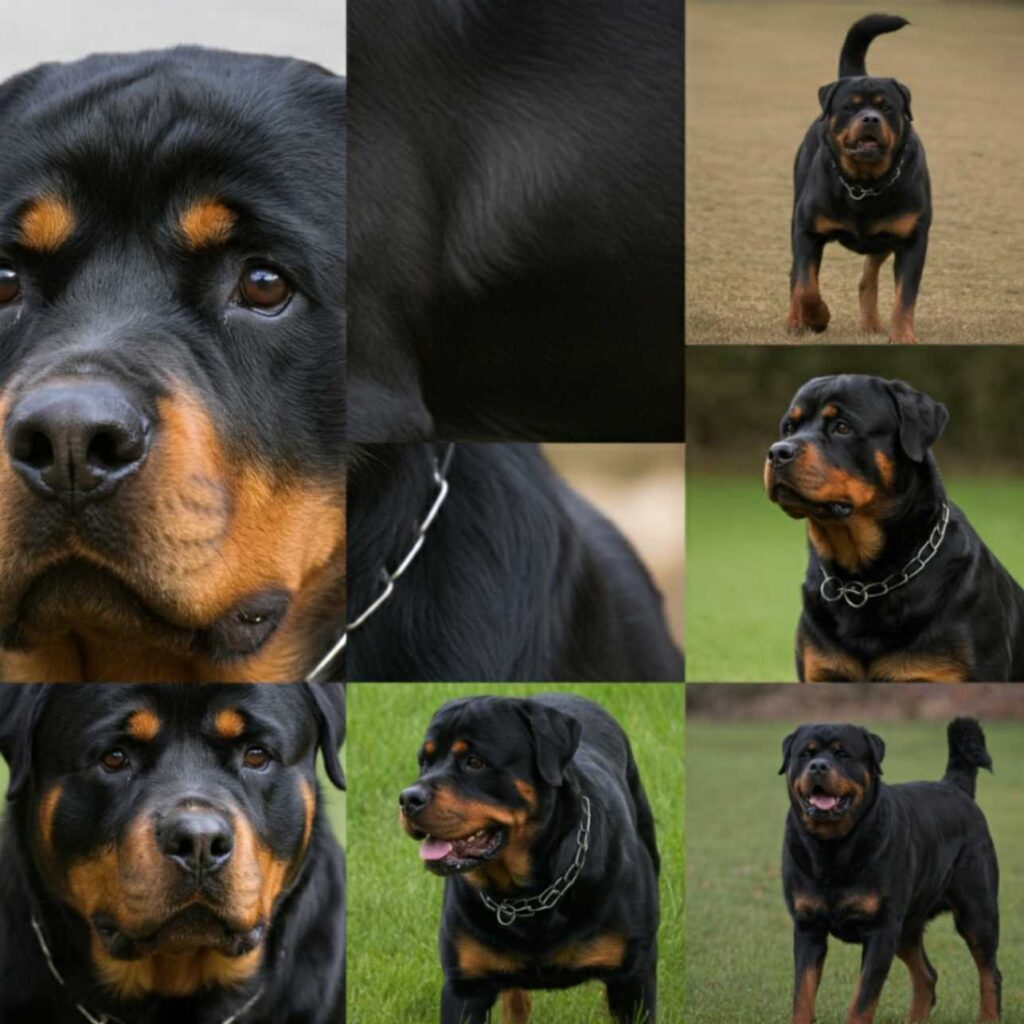
Slight Variations:
Now, just like with human fashion, there can be some subtle variations in the “Rottweiler look.” The shade of tan can range from a rich mahogany to a lighter, almost caramel color. And the exact size and shape of the markings can vary a bit too. But the overall black and tan pattern is always there.
-
Did you know that those tan markings are actually determined by specific genes? It's like their own personal genetic stylist chose those perfect accents!
Texture and Shedding: More Than Just a Pretty Face (Er, Coat!)
Okay, we’ve admired that sleek black and tan from afar, but let’s get a little closer. Ever actually touched a Rottweiler coat? It’s not what you might expect!
Double the Fun (and Fur):
Rottweilers have what’s called a “double coat.” That means they’ve got two layers of fur. There’s the outer coat, which is the one you see – those short, straight, somewhat coarse hairs. But underneath that, there’s a whole other layer of soft, fluffy undercoat. This undercoat is like their secret weapon against the elements. It keeps them warm in the winter and cool in the summer. Pretty neat, huh?
[Image suggestion: A close-up photo of a Rottweiler’s coat, where you can see the texture of both the outer coat and the undercoat.]
Shedding Season: The Great Fur-nado
Now, here’s the thing about double coats: they shed. And Rottweilers? They’re not exactly known for being light shedders. You’ll find those black and tan hairs on your clothes, your furniture, maybe even in your coffee (don’t ask me how it gets there, it just does!).
They shed moderately year-round, but get ready for the “Great Fur-nado” twice a year, when they blow their undercoat. During these shedding seasons (typically spring and fall), you’ll be amazed at how much fur one dog can produce. It’s like they’re trying to create a whole new Rottweiler out of fluff!
My Furry Friend, the Walking Dust Bunny:
I remember when I first got my Rottie, Luna. I thought I was prepared for the shedding. I bought all the brushes, the lint rollers, the fancy vacuum cleaner. But nothing could truly prepare me for the sheer volume of fur that came off that dog. It was like she was a walking dust bunny! But hey, it’s a small price to pay for the love and companionship of a Rottweiler.
-
Did you know that the amount a Rottweiler sheds can vary depending on their diet, health, and even the climate they live in? So, if you live in a warmer climate, your Rottie might shed more than a Rottie living in a cooler area.
Grooming Needs: Spa Day for Your Rottie!
Okay, so that Rottweiler coat is pretty awesome, right? But even the most low-maintenance fur needs a little TLC to stay in tip-top shape. Think of it like this: regular grooming is like a spa day for your Rottie!
Brushing: The Fur-ocious Battle Against Shedding
Remember all that shedding we talked about? Yeah, brushing is your secret weapon. A good brushing session a couple of times a week will help remove dead hair, prevent mats, and keep that coat looking sleek and shiny.
What kind of brush should you use? A slicker brush or a bristle brush works great for the outer coat, while a rake or undercoat rake can help tackle that fluffy undercoat during shedding season.
Bathing: Not Too Often, But Just Right
Rottweilers don’t need frequent baths. Over-bathing can actually strip their coat of its natural oils and cause dryness. Aim for a bath every 2-3 months, or more often if they get particularly dirty (mud puddles, anyone?).
When you do bathe them, use a gentle dog shampoo specifically formulated for their coat type. And don’t forget to rinse thoroughly!
The Grooming Extras:
Besides brushing and bathing, there are a few other grooming essentials to keep in mind:
- Nail Trimming: Keep those nails trimmed to prevent overgrowth and discomfort.
- Ear Cleaning: Check their ears regularly and clean them with a dog-specific ear cleaner to prevent infections.
- Dental Care: Brush their teeth regularly to maintain good oral hygiene and prevent dental disease.
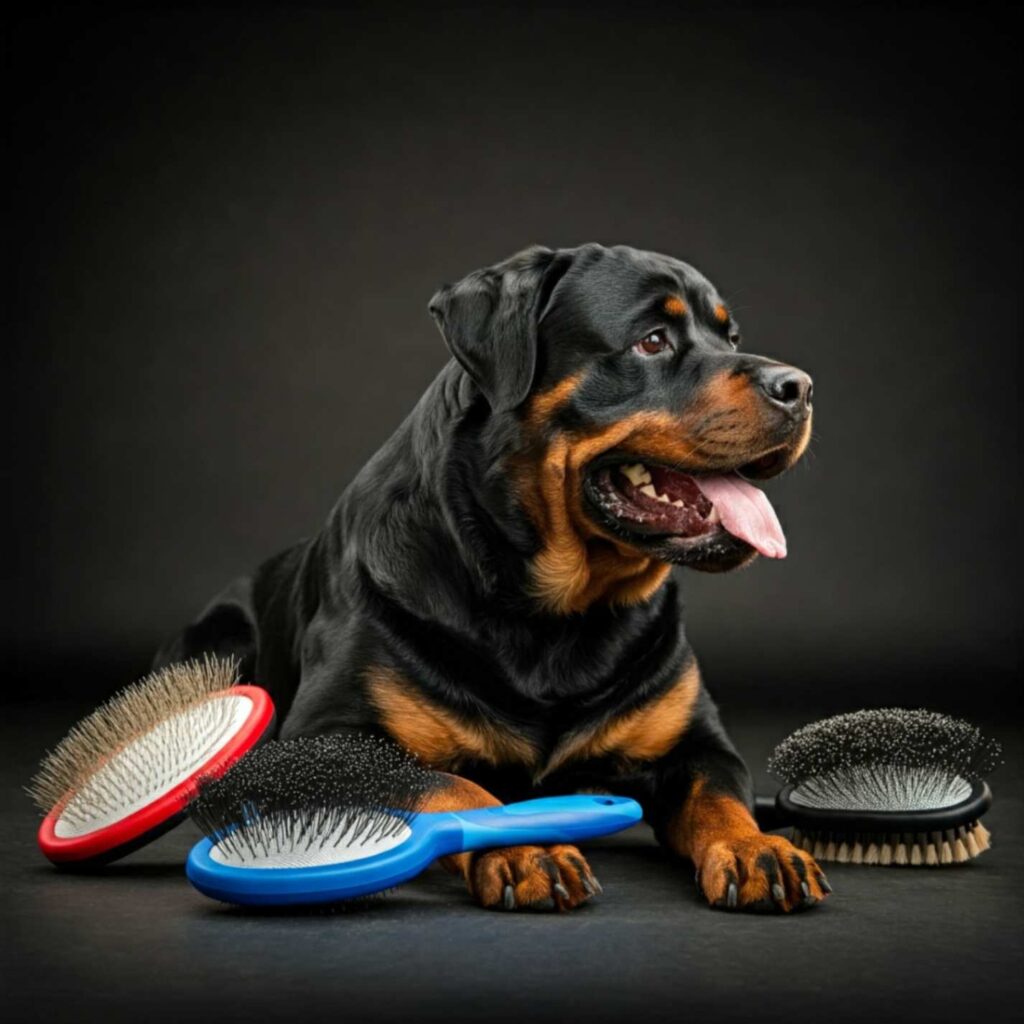
-
Did you know that regular grooming not only keeps your Rottweiler's coat healthy but also provides a great opportunity for bonding? It's a chance to give them some one-on-one attention and show them some love.
Coat Health: When That Glossy Coat Loses its Shine
Okay, so we’ve covered the basics of keeping that Rottweiler coat looking fabulous. But what happens when things go wrong? What if that glossy black and tan starts looking a little… blah? If you notice any issues with your Rottweiler’s coat, VCA Animal Hospitals provides information on common skin and coat problems in dogs.
Coat Conundrums:
Even the toughest Rotties can have coat issues. Here are a few common culprits:
- Dry Skin: This can cause flakiness, itchiness, and a dull coat. It’s often caused by dry weather, allergies, or nutritional deficiencies.
- Dandruff: Those pesky white flakes! Dandruff can be a sign of dry skin, allergies, or even parasites.
- Allergies: Just like humans, Rottweilers can have allergies to things like pollen, dust mites, or certain foods. Allergies can cause itching, redness, and hair loss.
- Hot Spots: These are itchy, inflamed areas of skin that can be caused by allergies, infections, or excessive licking.
Food for Thought (and a Healthy Coat):
Believe it or not, what your Rottweiler eats can have a big impact on their coat health. A balanced diet with high-quality protein, healthy fats, and essential vitamins and minerals is key for a shiny, healthy coat. To ensure your Rottweiler’s coat stays healthy, it’s important to understand their nutritional needs. The Merck Veterinary Manual offers a comprehensive guide to the nutritional requirements of dogs. Think of it this way: you gotta feed that fur from the inside out!
When to Call the Vet:
If you notice any persistent coat or skin issues, it’s always best to check with your veterinarian. They can help diagnose the problem and recommend the best course of treatment.
-
Did you know that omega-3 fatty acids can work wonders for a Rottweiler's coat? Adding a fish oil supplement to their diet can help improve skin health, reduce shedding, and boost that shine!
Conclusion: A Coat Worthy of a Rottie
So there you have it! We’ve explored the ins and outs of the Rottweiler coat – from that classic black and tan pattern to the double-coat magic and the shedding shenanigans.
Remember, a healthy coat is more than just a fashion statement for a Rottweiler; it’s a sign of overall well-being. By following these grooming tips and keeping an eye out for any coat concerns, you can help your Rottie look and feel their best.
A Final Thought:
The Rottweiler coat is a symbol of their strength, resilience, and unwavering spirit. It’s a reminder of their working heritage and their ability to thrive in various environments. So, the next time you admire that glossy black and tan, take a moment to appreciate its beauty and functionality. After all, a happy Rottie is a Rottie with a healthy, gleaming coat!
So, fellow Rottweiler enthusiasts, what are YOUR best tips for keeping that black and tan coat looking its best? Share your grooming secrets, favorite brushes, or funny shedding stories in the comments below!
FAQs: Your Burning Questions Answered!
1. Do Rottweilers shed a lot?
Answer: Yes, Rottweilers are moderate to heavy shedders. They have a double coat with a dense undercoat that they "blow" twice a year (typically in spring and fall). So, if you're thinking about getting a Rottie, be prepared for some fur to fly!
2. How often should I groom my Rottweiler?
Answer: Brushing your Rottweiler a couple of times a week is usually enough to keep their coat healthy and manage shedding. During shedding season, you'll want to brush them more frequently, maybe even daily, to remove that excess undercoat. Bathing should be done less often, every 2-3 months or as needed.
3. What kind of brush is best for a Rottweiler?
Answer: A slicker brush or bristle brush is great for everyday grooming. For shedding season, consider an undercoat rake or a de-shedding tool to help remove that loose undercoat.
4. What can I do about my Rottweiler's shedding?
Answer: While you can't completely eliminate shedding, regular brushing, a healthy diet, and occasional baths can help manage it. You can also try using a de-shedding tool during shedding season. And hey, a good vacuum cleaner and lint rollers are your best friends!
5. What causes Rottweilers to have dry skin?
Answer: Dry skin in Rottweilers can be caused by a few things, including dry weather, allergies (to food or environmental factors), and nutritional deficiencies. If you notice dry skin or dandruff, talk to your vet to rule out any underlying health issues and get advice on the best course of treatment.
Want to learn more about these amazing dogs? Dive deeper into the world of Rottweilers with our ultimate guide: “101 Amazing Rottweiler Breed Facts: History, Temperament & Care” You’ll discover everything you need to know about their history, temperament, training, and more!


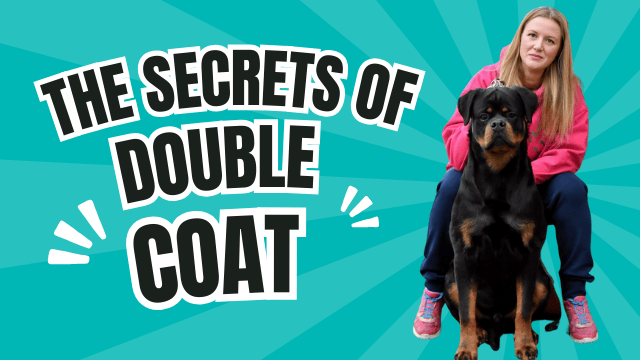


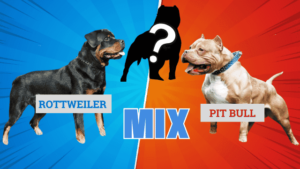
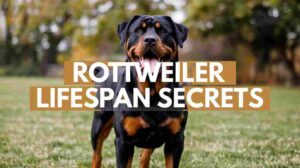
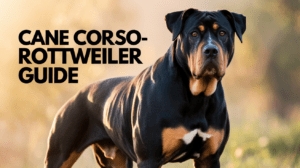
Pingback: 101 Rottweilers: A Breed Guide From Roman Roads to Modern Families
Pingback: 101 Rottweilers: A Breed Guide From Roman Roads to Modern Families